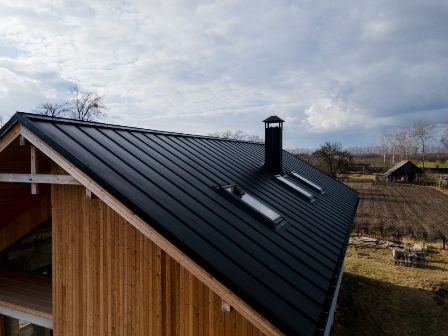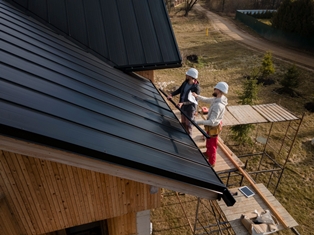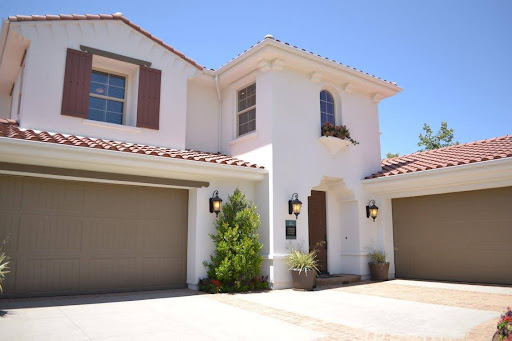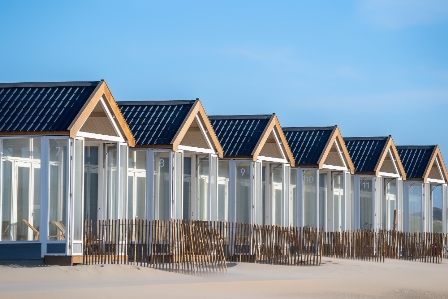Selecting the appropriate roofing style for your home is a crucial decision that goes beyond aesthetics. The right roof enhances your home’s structural integrity, energy efficiency, and overall curb appeal. In this guide, we’ll walk you through various factors to consider when making this important choice.
Consider Your Climate
Hot Climates
Living in a hot climate requires roofing materials that can withstand prolonged exposure to sunlight. Options like clay tiles or metal roofing are excellent choices due to their heat-resistant properties.
Cold Climates
Cold climates demand roofing materials with good insulation capabilities. Asphalt shingles or metal roofing with proper insulation can help keep your home warm in chilly weather.
Variable Climates
For regions experiencing diverse weather conditions, a roofing style that adapts well to both extremes is essential. Composite shingles or metal roofing can offer versatility in variable climates.
Budgetary Constraints
When deciding on a roofing style, your budget plays a pivotal role. Opting for cost-effective materials like asphalt shingles can be a practical choice for those with financial constraints. Remember, investing in high-quality roofing is a long-term investment in your home’s future.
Long-Term Investment
While upfront costs may seem high for premium materials, they often pay off in the long run. Metal roofing, for example, boasts durability, requiring less maintenance and providing long-lasting protection.
Architectural Style of Your Home
The architecture of your home significantly influences the ideal roofing style. For modern structures, sleek and minimalist roofing materials like metal or flat roofs may complement the design. Traditional homes, on the other hand, might benefit from classic choices like clay tiles or wooden shakes.
Modern Architecture
In contemporary homes, flat roofs with reflective surfaces are gaining popularity for their clean lines and energy-efficient features.
Traditional Architecture
Traditional homes often look best with materials like slate or wood shakes that add a touch of classic charm.
Eclectic Styles
For homes with eclectic styles, mixing and matching materials to create a unique look can be an exciting option. Consider a combination of metal and asphalt shingles for a one-of-a-kind appeal.
Material Options
The material you choose for your roofing has a direct impact on its performance and appearance. Let’s explore some popular options.
Asphalt Shingles
Asphalt shingles are affordable and easy to install, making them a common choice for many homeowners. They come in various colors, offering versatility in design.
Metal Roofing
Metal roofing is known for its durability and energy efficiency. It’s available in different metals like steel, aluminum, and copper, each with its unique benefits.
Tile Roofing
Tile roofing, often made of clay or concrete, adds a distinct Mediterranean or Spanish aesthetic to your home. It’s durable but may be heavy and requires proper structural support.
Wood Shakes
Wood shakes provide a natural and rustic look. While visually appealing, they require more maintenance to prevent issues like rot and moss growth.
Durability and Maintenance
The longevity of your roof and the maintenance it requires are critical considerations.
Low Maintenance Options
Metal roofing and asphalt shingles are low-maintenance choices, making them suitable for homeowners with busy lifestyles.
Regular Maintenance Requirements
Wood shakes and tile roofing may require more regular maintenance to ensure they stay in optimal condition. Factor in the time and effort you’re willing to invest in upkeep.
Energy Efficiency
In an era of environmental consciousness, the energy efficiency of roofing materials is a growing concern.
Cool Roofing Options
Reflective metal roofing and cool asphalt shingles can help reduce heat absorption, keeping your home cooler and lowering energy bills.
Insulation Considerations
Materials like clay tiles or wood shakes, while not inherently reflective, can provide natural insulation, contributing to energy efficiency.
Local Building Codes
Adhering to local building codes is non-negotiable when selecting a roofing style. Familiarize yourself with the codes and permitting processes in your area.
Understanding Codes
Local codes may dictate the types of materials allowed, slope requirements, and even color choices. Ensure your chosen roofing style aligns with these regulations.
Permitting Process
Before starting any roofing project, obtain the necessary permits. Failure to do so could result in legal consequences and complications when selling your home.
Roof Slope and Pitch
The slope and pitch of your roof impact both aesthetics and functionality.
Flat Roofs
Flat roofs, common in modern architecture, offer a sleek appearance but require proper drainage systems to prevent water pooling.
Steep Slopes
Steep-sloped roofs, often seen in traditional homes, provide better water runoff and can accommodate a variety of roofing materials.
Environmental Impact
Considering the environmental impact of your roofing materials is essential in making eco-friendly choices.
Recyclable Options
Metal roofing and some asphalt shingles are recyclable, reducing the environmental impact when it’s time for a replacement.
Sustainable Choices
Slate and clay tiles are natural materials with a long lifespan, making them sustainable choices. Ensure they are sourced responsibly for a greener option.
Installation Complexity
The complexity of installation can vary significantly among roofing materials.
DIY-Friendly Options
Asphalt shingles are often considered DIY-friendly, making them suitable for homeowners looking to save on installation costs.
Professional Installation Required
Metal roofing or complex architectural styles may require professional installation to ensure proper sealing and longevity.
Warranty and Lifespan
Understanding the warranty and expected lifespan of your chosen roofing material is crucial for long-term planning.
Longevity Considerations
Investigate the expected lifespan of your chosen material and compare it to other options to ensure it aligns with your expectations.
Warranty Comparison
Different materials come with varying warranties. Consider the warranty period and what it covers, including issues like leaks or structural defects.
Curb Appeal
The aesthetic appeal of your roof contributes significantly to your home’s overall curb appeal.
Enhancing Curb Appeal
Choose a roofing style that enhances the visual appeal of your home. Consider complementary colors and textures to create an inviting exterior.
Matching Exterior Colors
Ensure your roofing material harmonizes with the color palette of your home’s exterior. A well-coordinated look can elevate the overall appearance.
Roofing Trends
Staying informed about current roofing trends can provide inspiration for your decision-making process.
Contemporary Trends
Green roofs, solar panels, and sustainable materials are increasingly popular in contemporary roofing trends.
Timeless Choices
Classic materials like slate, metal roofing, and wood shakes continue to stand the test of time, offering timeless elegance.
FAQs (Frequently Asked Questions)
A: It’s generally not recommended, as it can lead to structural issues and void warranties. Consult a professional to assess your specific situation.
A: Regular inspections, at least twice a year, are advisable. Check for damaged or missing shingles, signs of leaks, and any other potential issues.
A: Metal roofing is a popular choice for coastal areas due to its resistance to saltwater corrosion.
A: Yes, materials like metal, asphalt shingles with reflective surfaces, and sustainable choices like slate are considered environmentally friendly.
A: If your roof is aging, has widespread damage, or you experience frequent leaks, it might be more cost-effective to opt for a replacement rather than constant repairs. Consult a roofing professional for advice.
Conclusion
Choosing the right roofing style for your home involves a thoughtful consideration of various factors. From climate suitability to budget constraints and architectural harmony, each element plays a crucial role. By weighing these considerations, you can make an informed decision that not only enhances your home’s aesthetic appeal but also ensures long-lasting protection.











Find Us on Socials